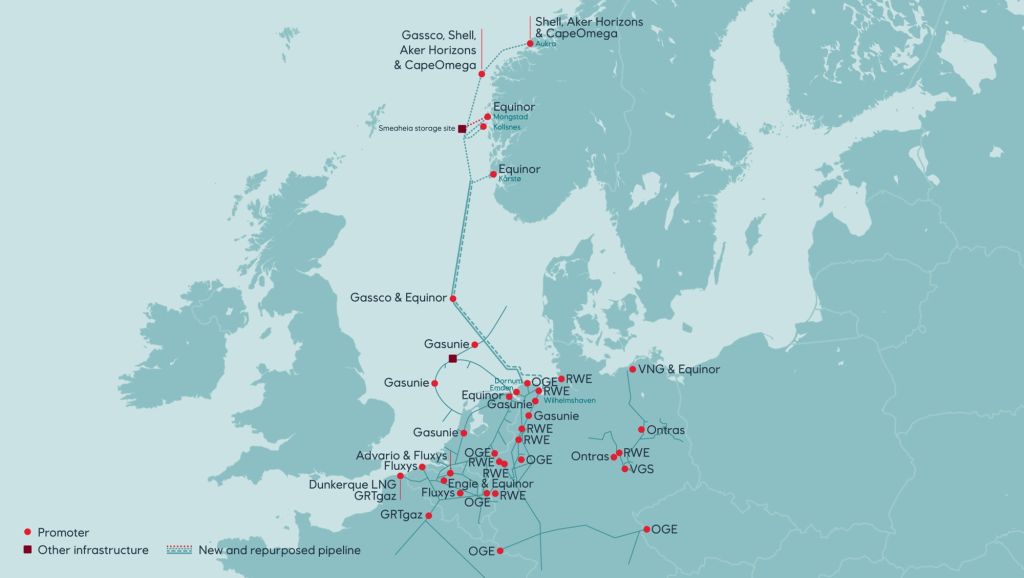Germany – Gasunie wants to build a hydrogen network in the German North Sea. This German hydrogen network is critical to the large-scale import of hydrogen from Norway and the expanding supply of green hydrogen from upcoming North Sea wind farms.
The German offshore network will be linked to the Dutch offshore network, allowing for cross-border import and, eventually, export of hydrogen via the Dutch offshore network. The company has now filed to the European Commission for Project of Common Interest (PCI) designation in order to establish the offshore hydrogen network.
The Netherlands connection
Gasunie’s proposal is part of the international Clean Hydrogen for Europe collaboration, which is seeking to realize the complete hydrogen chain, from production, transport, and storage to linking end-users in northwestern Europe. Aside from Gasunie, firms from Germany, Belgium, France, and Norway have submitted PCI projects to the collaboration. The hydrogen network in the German North Sea is expected to be operational by 2030. The connection to the Netherlands will be established in the coming years.
North Sea role
In the German government’s hydrogen strategy, the North Sea, in addition to a nationwide hydrogen network and large-scale storage facilities, plays a critical role in making German society more sustainable and contributing to greater European energy independence. Furthermore, Germany sees itself as a critical region in the development of the European hydrogen market. The amount of hydrogen produced by offshore wind farms and supplied from neighboring nations will significantly increase beginning in 2030. To bring it to land, a hydrogen transport network at sea is required. The first German wind farm with an electrolysis capacity of around 1 GW (known as SEN-1) will be tendered in 2023, according to recent announcements.
In 2022, the Netherlands, Denmark, Germany and Belgium signed the Esbjerg Declaration, in which they promised to develop the North Sea as a ‘green power plant’. Aside from the massively delivered electrical energy, a considerable portion of wind energy will already be transformed at sea into hydrogen, which will be brought onshore from the North Sea via international hydrogen connections. Network operators and governments from many countries are collaborating as much as possible to realize the green power plant.





